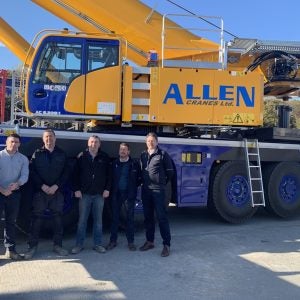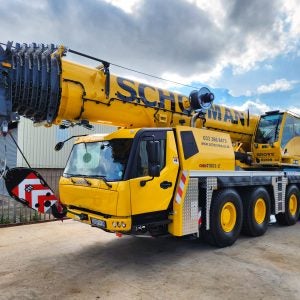“Crane developments in general, and tower crane developments in particular, since 1949 quite clearly indicate the inseparable personal link with our company founder, Hans Liebherr. Every aspect of tower crane development has been clearly shaped by his work. This is demonstrated not only by our leading position in the tower crane area, particularly with regard to technical innovations, but also in every other crane sector, in which Liebherr’s total turnover in 2000 should exceed DM2bn ($1bn).
If one intends to be the Number One in a particular market, this normally presupposes that one must occupy this position by a considerable margin in every area: turnover, number of different crane systems, units sold and technology. The emphasis will normally be on maintaining such a clear lead over a significantly long period. We believe that when Liebherr and Potain are compared, it is very difficult to differentiate in this manner.
For this reason we have not attached any great importance so far to describing ourselves as the Number One, although this would have been possible. For example, we have a chart from a Potain brochure in our possession which shows the numbers of Potain cranes produced from 1990 to 1995. If the figures are compared with our own, we find that in 1990 Potain produced about 2,300 cranes compared with our own figure of approximately 2,000. In 1991 Potain’s figure was about 2,100 whereas ours was 2,425. We equalled this figure in 1992, whereas Potain only made about 1,400 units. In 1993 Potain’s chart shows that it produced about 1,200 cranes, against our total of 2,074. In 1994 the Potain figure was in the region of 1,300. Ours, on the other hand, was 2,304. And finally, in 1995 Potain produced about 1,100 tower cranes and we reached an output of 1,539. We have no further credible comparative sales figures at our disposal.
In free markets where competition is unrestricted, we have a total market share in excess of 30%. ‘Total’ in this case means the complete performance range up to 5,000tm, including the small 18tm tower cranes, an area in which we are not represented.
When examining production or delivery volume, however, one must also bear in mind that a small tower crane weighing only 3.8t (16.2m working radius, load capacity 600kg, maximum load 1,000kg, hook height 15m) is counted as one unit, in just the same way for example as a Liebherr 112 EC-H tower crane with 55m working radius and 1,400kg load capacity, a maximum load limit of 10t, a hook height of 49m and a weight of 63t. In this size category, for example, our market share reached 50% in 1999.
With regard to the number of crane types, Potain now has a larger number in its programme, at least on paper. It must be borne in mind, however, that Potain for example has six models in size categories below 20tm, where we do not sell, and still lists its old 321, 326, 331 and 336 A models in the 20tm to 40tm class although these have long since been superseded by the HD series.
As it happens, the 331 and 336 models are now being offered for sale again in various countries although in technical terms they represent the state of the art of the year 1980 or earlier.
Our policy is always to offer genuine benefits and economic advantages to the construction company. This can for example be seen in the way we have steadily developed our top slewing cranes, which have for the past 30 years been supplied as a modular-element system to which the construction company can still add items as necessary even today. Potain, as well as other crane manufacturers, have changed their systems on numerous occasions and cannot therefore offer this vital economic advantage to their customers.
In our case it is not possible to look at tower cranes, mobile cranes, truck cranes, ships’ cranes, container cranes and offshore cranes as products in isolation, since there are enormous synergy effects available within these areas.
Therefore, in view of this, we shall refer to Liebherr in the future as a manufacturer that achieves a turnover of more than DM2bn and is dedicated to offering the user the most economical crane possible. Size alone should not be the only criterion.”






